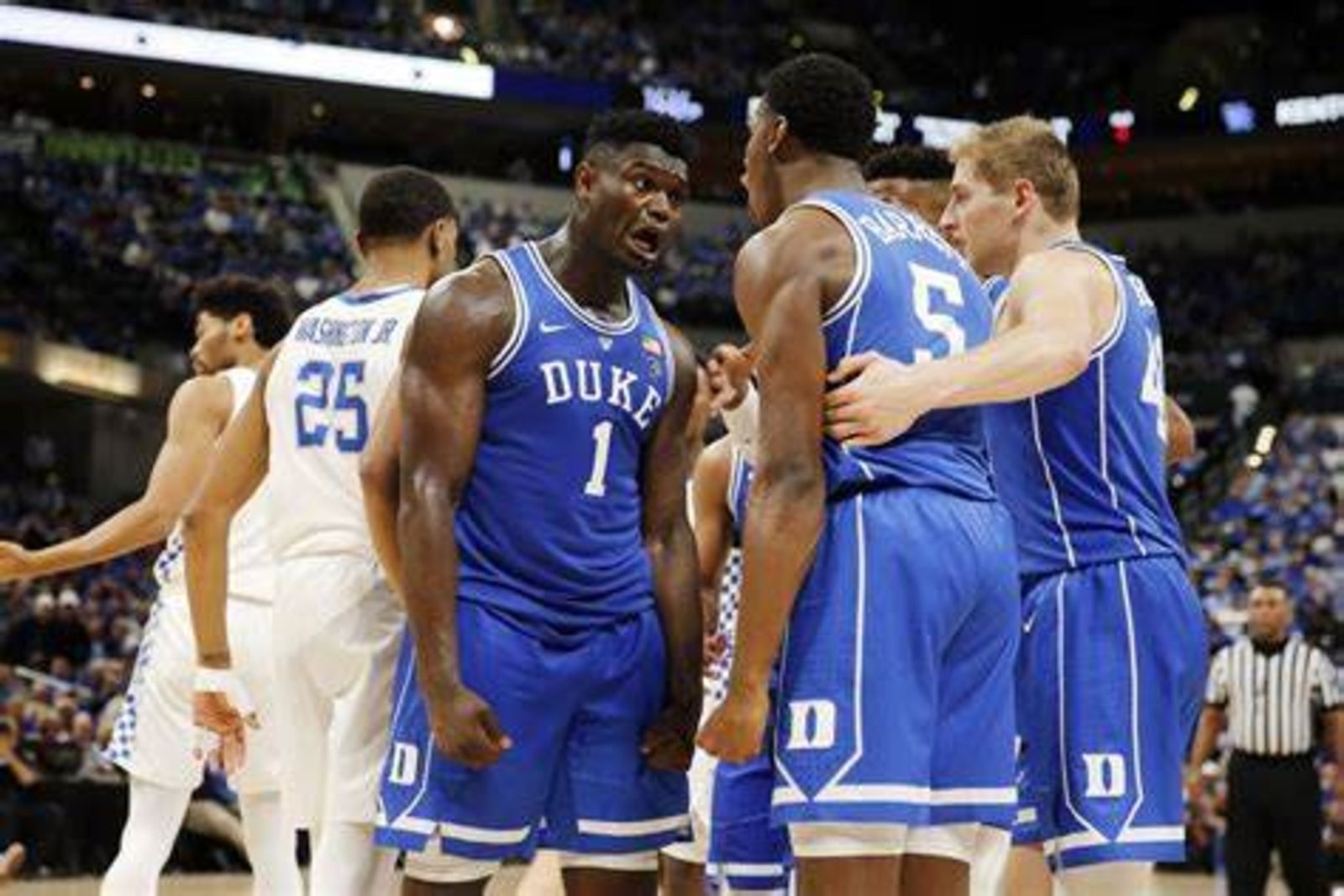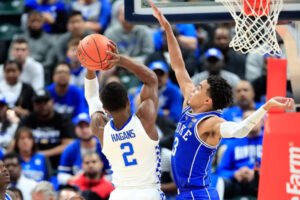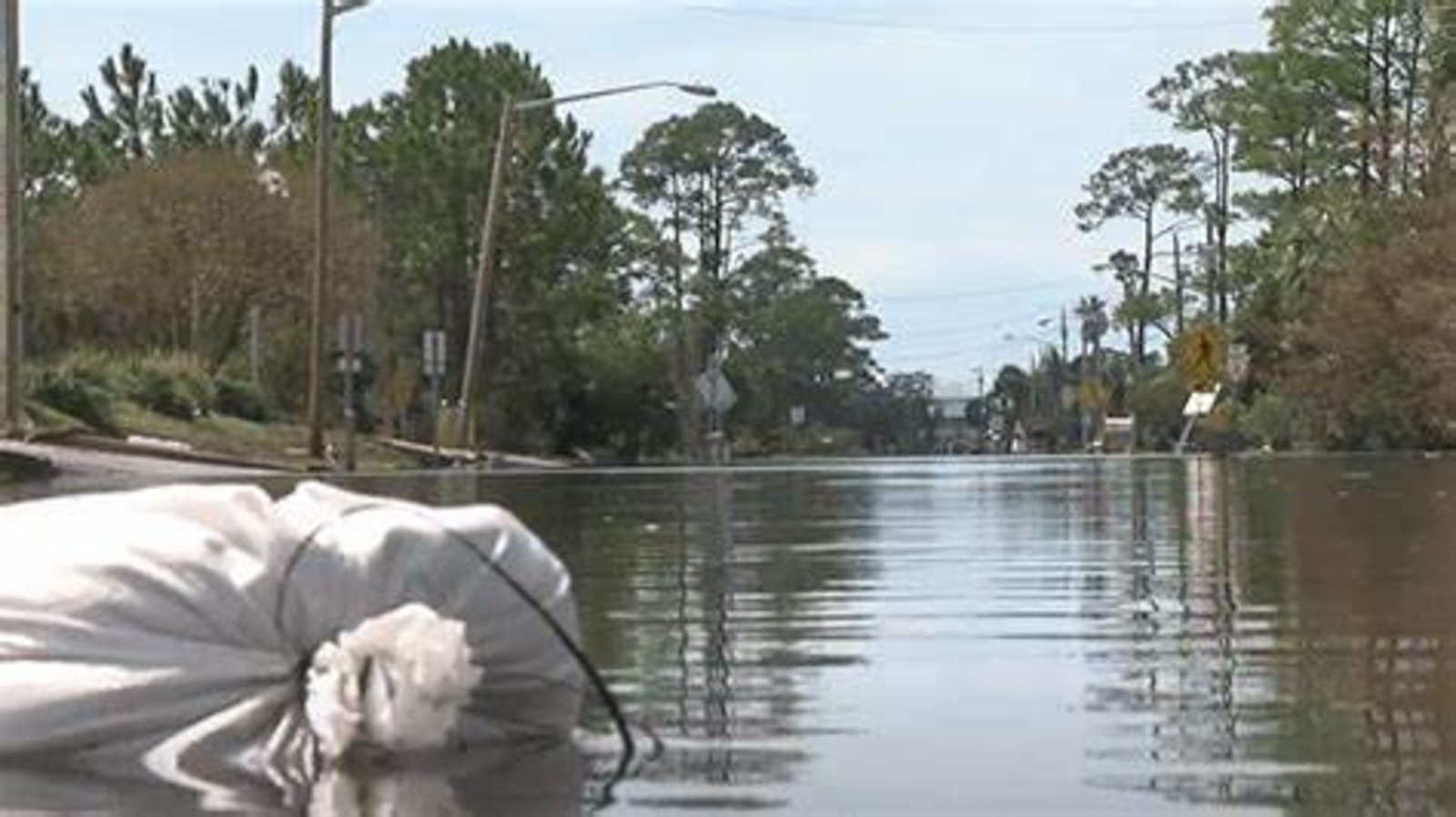
Dukes 5 Big Moves Against Kentucky. Kentucky vs. Duke: First-Half Highlights
In a much-anticipated showdown, Duke and Kentucky took to the court, with each team bringing distinct advantages. Duke’s roster is packed with athletic talent and length, while Kentucky holds a depth advantage and more experience. However, Duke’s youth seemed unfazed, grabbing a 46-37 lead at halftime. The score, though close, may not reflect the actual momentum on the court. Dukes 5 Big Moves Against Kentucky
Kentucky’s Shooting: Mixed Success
Kentucky’s first-half shooting was a mixed bag. They managed seven three-pointers, which helped keep the game competitive. Despite this, the Wildcats shot just 36.7 percent from the field overall, limiting their scoring opportunities. From the free-throw line, they fared a bit better, converting 61.5 percent. However, the team’s shooting inconsistency, combined with other issues, posed challenges.

In a much-anticipated showdown, Duke and Kentucky took to the court
Foul Trouble Poses Problems for Kentucky
Foul trouble plagued the Wildcats in the first half. Kentucky players committed ten fouls, split among seven team members. Three players, including starters, ended the half with two fouls each. This hindered their ability to defend aggressively and posed limitations on their play. Forwards Andrew Carr and Amari Williams led the team with eight points each, while Otega Oweh added six points, Lamont Butler five, and both Ansley Almonor and Kerr Kriisa three each.
Key Players’ Contributions
Among Kentucky’s roster, Carr and Williams have been standouts, both with eight points. Oweh, Butler, Almonor, and Kriisa provided support but struggled to gain momentum. Jaxson Robinson faced difficulties, missing all field attempts but earning a trip to the line, where he converted only one of three shots. Kentucky’s fouls, coupled with shooting inconsistencies, dampened the team’s first-half performance.
Duke’s Dominance on the Floor
Duke’s talent advantage showed prominently. Cooper Flagg and Kon Knueppel led Duke’s scoring efforts with 12 points each, while Tyrese Proctor contributed ten points. Though Duke wasn’t shooting well from beyond the arc—converting just 25 percent of their three-point shots—the team made up for it with a strong 48.6 percent from the field overall. This field efficiency helped Duke secure the lead, putting pressure on Kentucky’s defense.
Struggles from Beyond the Arc
Kentucky relied on three-pointers to close the gap but struggled overall. They hit seven threes in the first half but struggled with consistency in other areas. On the other hand, Duke’s players remained disciplined and capitalized on their field shots, even with limited success from long range.
Fouls Impact Kentucky’s Defense
Kentucky’s foul trouble was evident as their players struggled to maintain an aggressive defense without drawing fouls. The frequent fouling disrupted their momentum and forced rotations, impacting the team’s overall defensive strategy. Duke’s players took advantage of this situation, creating scoring opportunities without much resistance.
Duke’s Young Roster Rising to the Occasion
The youthful Duke team has been impressive, showing maturity and discipline. Cooper Flagg and Knueppel each put up a solid 12 points, displaying confidence and focus. Their scoring contributions have been crucial for Duke’s lead, as they effectively balanced the offense. Proctor’s 10 points added additional support, making it hard for Kentucky to find a rhythm.
Kentucky’s Challenges in Regrouping
Heading into the second half, Kentucky has room for adjustments but must address its foul trouble. They need a more disciplined approach on defense to avoid further fouls and keep players in the game. Improved shooting from the field will also be essential if Kentucky hopes to narrow the gap. Duke’s lead might only be nine points, but Kentucky faces an uphill battle.
Kentucky faces significant hurdles as it works to regroup and move forward. From economic struggles to social issues, the state is grappling with a variety of complex challenges. One of the primary obstacles is the state’s fiscal health. Kentucky has long faced budget deficits, which have led to cuts in vital public services, including education and healthcare. These financial constraints hinder the state’s ability to invest in infrastructure or attract new business ventures, making economic recovery a slow and difficult process.
In addition to financial issues, Kentucky struggles with a lack of workforce development. The state’s unemployment rate has fluctuated, and many workers face challenges in gaining access to the necessary skills for emerging job sectors. This gap in workforce readiness has left many individuals without job opportunities, further deepening the economic divide.
Kentucky’s education system also requires a significant overhaul. While the state has made progress, test scores in public schools still lag behind national averages, and a number of rural districts face difficulties in securing resources and qualified teachers. Ensuring equal access to quality education for all students, regardless of their background or location, is a priority for the state as it seeks to build a more equitable future.
Health disparities further complicate Kentucky’s recovery efforts. The state has one of the highest rates of smoking and obesity in the country, leading to higher incidences of chronic diseases. Access to healthcare in rural areas remains limited, making it more difficult to improve the overall health of residents.
Kentucky’s path to regrouping is not an easy one. It will require a strategic and multifaceted approach that addresses these economic, educational, and healthcare challenges in order to create a more sustainable and prosperous future for its residents.
Adjustments Needed for Kentucky
For Kentucky, cleaning up their defensive approach and shooting consistency is crucial. Coach adjustments in strategy will be necessary, especially with their top players at risk of fouling out early. Emphasis on higher-percentage shots and controlling the tempo could help Kentucky regain their footing.
Second Half Outlook
With another half remaining, Kentucky has the opportunity to regroup. Avoiding fouls will be a priority, as will finding ways to contain Duke’s scoring threats. The Wildcats must lean on their experience and depth to counter Duke’s athleticism. Both teams face pressure to adapt and push forward, with the game still open for either side to claim victory.







